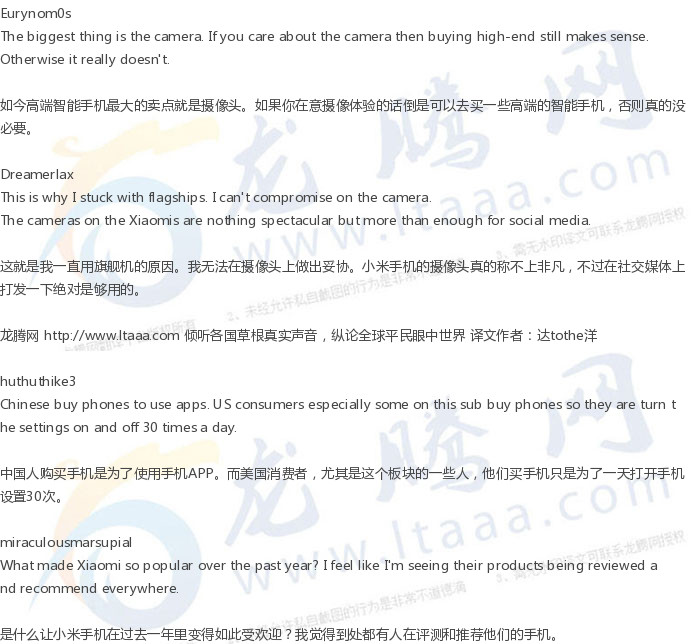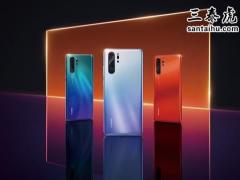三星在中国和印度市场节节败退,而它只能埋怨自己 [美国媒体]
随着西方智能手机市场趋于平稳,手机制造商们逐渐将自己的重心转向了亚洲市场,因为那里有着大得多的潜在的用户基础。尤其是三星,介于其积极的营销手段以及庞大的线下分销网络,该公司在过去5年里成功地在中国和印度市场占据了健康的领先地位。
Samsung is losing ground in China and India, and it has itself to blame
三星在中国和印度市场节节败退,而它只能埋怨自己
With smartphone sales plateauing in Western countries, phone manufacturers shifted focus to Asian markets, where the addressable userbase is considerably larger. Samsung, in particular, has managed to carve out a healthy lead for itself in both China and India over the last five years thanks to aggressive marketing and an extensive offline distribution network.
随着西方智能手机市场趋于平稳,手机制造商们逐渐将自己的重心转向了亚洲市场,因为那里有着大得多的潜在的用户基础。尤其是三星,介于其积极的营销手段以及庞大的线下分销网络,该公司在过去5年里成功地在中国和印度市场占据了健康的领先地位。
With the Indian mobile industry driven primarily by price, there is no way for Apple to claw its way back in the country without drastically changing its business practices. Samsung, meanwhile, is also facing a sales downturn and is projected to miss its profit targets for Q4 2018. That's a big deal when you consider the fact that Samsung posted record profits for much of last year.
由于印度的移动市场主要是由低廉的价格所驱动的,因此苹果绝无可能在不大幅改变自身商业策略的情况下,重新在印度市场站稳脚跟。与此同时,三星手机也同样面临着低迷的销售,预计它们将无法实现自己在第四季度的利润目标。考虑到三星在去年大部分时间里都实现了创纪录的利润,这一现象对它们而言,并非是一件小事。
Even though Samsung as a whole posted healthy profits, a bulk of that was down to its chip business, which has taken off in recent years. Samsung became the world's largest semiconductor early last year after overtaking Intel, and that momentum has continued through much of 2018. However, Apple is one of Samsung's biggest clients for DRAM modules, and with iPhone sales on the downturn, Samsung is also slashing its outlook. With the company no longer able to rely as heavily on its chip division, it needs to look elsewhere for growth, and that means increased scrutiny over its phone business.
尽管三星公司作为一个整体依然保持着健康的利润,但是这很大程度上要归功于他们最近几年起飞的芯片业务。去年初,三星超越英特尔,成为了全球最大的半导体制造商,这一势头在2018年的大部分时间里都一直延续了下来。然而,苹果是三星DRAM模块最大的客户之一,随着iPhone销量的下滑,三星也不得不大幅下调自身的前景预期。介于该公司不能像过往一样如此严重地依赖自身的芯片部门,它们需要寻找到其他的增长点,这就意味着他们对自身手机业务的重视将大幅增强。
Devices under $200 account for a sizable portion of sales in India and Xiaomi utterly dominates in this category, with the brand selling over ten phones in the budget space. It's no wonder, then, that four out of five best-selling phones in India come from Xiaomi. To give you an idea of the numbers involved, the entry-level Redmi 5A — which retails for under $100 — was the best-selling Android phone globally.
售价在200美元以下的手机在印度市场的销量占据了相当大的份额,而小米则在这一类别中完全占据了主导地位,该品牌在这一预算空间内铺设了10多部手机。这也难怪印度最畅销的5部手机中有四部都来自小米。为了让你直观地了解这一数字:小米售价不到100美元的入门级智能手机红米5A是全球最畅销的安卓手机。
The 2018 Galaxy J launches — in the form of the Galaxy J8, J6, J6+, and the J4 — were all derivative and had mediocre hardware that wasn't even close to what Chinese brands were offering. To call them a dumpster fire would be an affront to dumpsters. In a year where everyone else raised the bar for value, Samsung decided to stick with its usual strategy of rolling out phones with parts from the leftover bin, and unless that changes this year, Samsung will lose even more ground.
三星于2018年发布了GalaxyJ8,J6,J6+,J4等一些列J系列衍生产品,但是他们在硬件上的表现都非常的平庸,甚至连中国品牌的尾灯都摸不着,把它们丢进垃圾箱里都是对其他垃圾的侮辱。在过去一年里,其他所有的手机厂商都提高价值标准,而三星则却在坚持自己一贯的策略,推出了一些列利用老旧的零部件组装而成的手机,除非他们在今年做出一些改变,否走三星将失去更多的市场。
Petrolicious66
The problem for both iPhone and Samsung is that Chinese phones have gotten so much better in quality while still staying low in price.
iPhone和三星陷入困境的原因是相同的,那就是中国手机在质量上提高了很多,但是它们的手机依然低廉。
Dreamerlax
It's as if you don't really need a $800-900 smartphone to get a great experience anymore.
如今你不需要在手机上花800~900美元的钱就能享受到非凡的用户体验。
sp1n
They're cost effective, have good specs and decent support. Somehow this combination is rare in the Android market. They've built up a name for themselves by providing decent products at appealing prices. Also, you don't feel too bad about changing a $250 phone every 12-18 months. Not many can afford to change $1000 phones at that cadence.
因为他们物超所值,配置良好,软件支持也到位。不知道为什么,这种组合在安卓市场上并不多见。他们以诱人的价格提供着得体的产品,从而为自己赢得了声誉。此外,每12-18个月换一台250美元的手机并不会让你觉得可惜,然而如果以这样的周期更换1000美元的手机的话,大部分人都会觉得力不从心。
samcuu
Their phones are cheap. They have phones that cost less than 50% of the price of a mid-range Samsung phone, while having better specs. Their flagships are also half the price of other brands'.They also offer a huge variety of products and hook users into their eco-system by selling cheap phones to gain market share. You can fill your house with Xiaomi logo, from phones and phone accessories (power banks, headphones, chargers,...) to laptop, router, vacuum cleaner, rice cooker, TV, lighting, washing machine, cameras, etc. They are sort of like Samsung of China now.
YumethGX
In sri lanka its mostly Huawei and Oppo.
在斯里兰卡,大部分手机都是华为和Oppo
版权声明
我们致力于传递世界各地老百姓最真实、最直接、最详尽的对中国的看法
【版权与免责声明】如发现内容存在版权问题,烦请提供相关信息发邮件,
我们将及时沟通与处理。本站内容除非来源注明五毛网,否则均为网友转载,涉及言论、版权与本站无关。
本文仅代表作者观点,不代表本站立场。
本文来自网络,如有侵权及时联系本网站。
图文文章RECOMMEND
热门文章HOT NEWS
-
1
Why do most people who have a positive view of China have been to ...
- 2
- 3
- 4
- 5
- 6
- 7
- 8
- 9
- 10
推荐文章HOT NEWS
-
1
Why do most people who have a positive view of China have been to ...
- 2
- 3
- 4
- 5
- 6
- 7
- 8
- 9
- 10
















